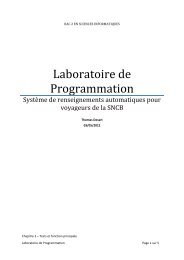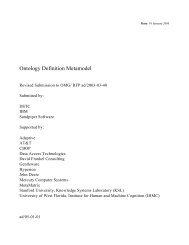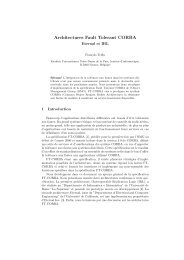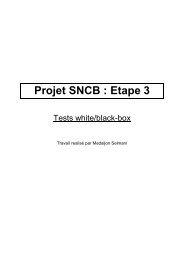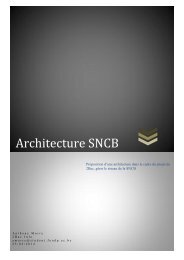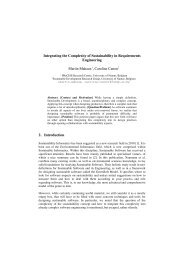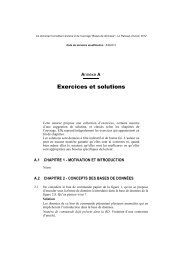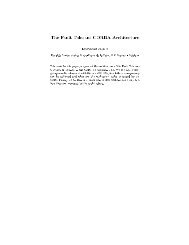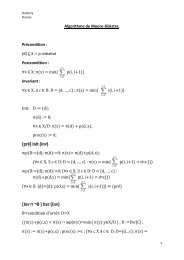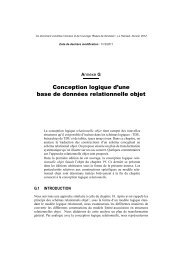Database Reverse Engineering - A Case Study - Institut d'Informatique
Database Reverse Engineering - A Case Study - Institut d'Informatique
Database Reverse Engineering - A Case Study - Institut d'Informatique
You also want an ePaper? Increase the reach of your titles
YUMPU automatically turns print PDFs into web optimized ePapers that Google loves.
other components of the application (views, subschemas, screen and report layouts, procedures, fragments of<br />
documentation, database content, program execution, etc).<br />
The problem is much more complex for standard files, for which no computerized description of their structure<br />
exists in most cases. The analysis of each source program provides a partial view of the file and record<br />
structures only. For most real-world applications, this analysis must go well beyond the mere detection of the<br />
record structures declared in the programs, as will be shown in the case study.<br />
Normalized<br />
conceptual schema<br />
DMS-compliant<br />
optimized schema<br />
CONCEPTUAL<br />
NORMALIZATION<br />
Raw conceptual<br />
schema<br />
SCHEMA<br />
DE-OPTIMIZATION<br />
Conceptual-logical<br />
-physical schema<br />
SCHEMA<br />
UNTRANSLATION<br />
SCHEMA<br />
PREPARATION<br />
SCHEMA<br />
INTEGRATION<br />
DATA<br />
ANALYSIS<br />
PROGRAM<br />
ANALYSIS<br />
DMS-DDL text<br />
ANALYSIS<br />
DMS-DDL<br />
schema<br />
Physical<br />
schema<br />
Programs<br />
Data<br />
DMS-compliant<br />
optimized schema<br />
Figure 1. Main components of the generic DBRE methodology. Quite naturally, this reverse methodology is to be<br />
read from right to left, and bottom-up.<br />
In our generic methodology, the main processes of DATA STRUCTURE EXTRACTION are the following :<br />
• DMS-DDL text ANALYSIS. This rather straighforward process consists in analyzing the data structures<br />
declaration statements (in the specific DDL) included in the schema scripts and application programs. It<br />
produces a first-cut logical schema.<br />
• PROGRAM ANALYSIS. This process is much more complex. It consists in analyzing the other parts of<br />
the application programs, a.o. the procedural sections, in order to detect evidence of additional data<br />
structures and integrity constraints. The first-cut schema can therefore be refined through the detection of<br />
hidden, non declarative structures.<br />
• DATA ANALYSIS. This refinement process examines the contents of the files and databases in order (1)<br />
to detect data structures and properties (e.g. to find the unique fields or the functional dependencies in a<br />
file), and (2) to test hypotheses (e.g. "could this field be a foreign key to this file ?"). Hidden, non<br />
declarative and lost structures can be found in this way.<br />
• SCHEMA INTEGRATION. When more than one information source has been processed, the analyst is<br />
provided with several, generally different, extracted (and possibly refined) schemas. Let us mention some<br />
common situations : base tables and views (RDBMS), DBD and PSB (IMS), schema and subschemas<br />
FIIA96 (04/04/07) 2



